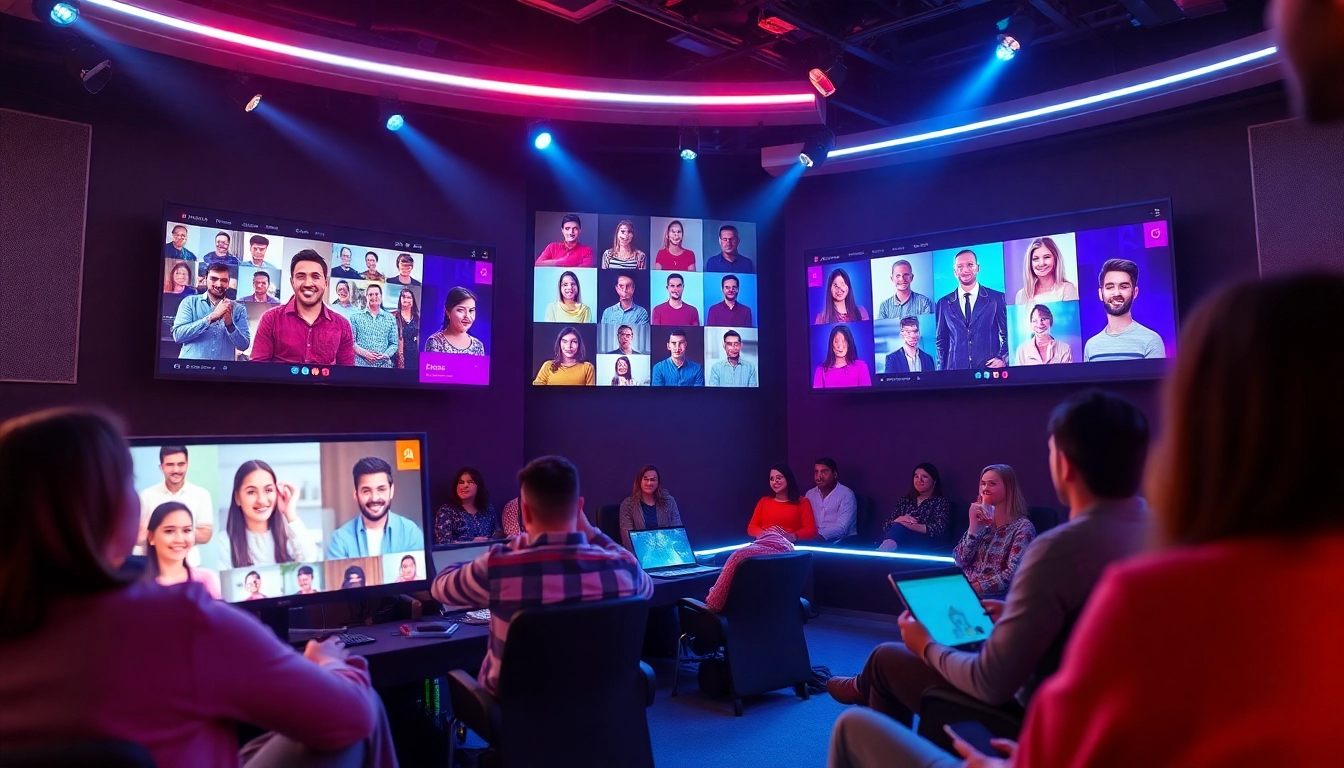What is a Virtual Audience System?
Understanding the Concept
A Virtual Audience System refers to a technology-driven solution designed to facilitate interactive and engaging experiences for audiences participating in events remotely. Events have transferred from traditional in-person gatherings to virtual platforms, expanding their reach to global audiences. A Virtual Audience System enables organizers to create an inclusive environment that fosters communication, participation, and a sense of community among attendees who are not physically present. This system utilizes various tools, including live streaming, chat functions, and interactive features, to replicate the energy and engagement of a live event. As the world adapts to digital interactions, understanding the mechanics of a Virtual Audience System is crucial for modern event planners.
Key Features of Virtual Audience Systems
- Live Streaming Capabilities: The backbone of any virtual audience system is its ability to stream live content in real-time to participants around the globe.
- Interactivity Tools: Features such as polls, Q&A sessions, and chat rooms enable attendees to participate actively, enhancing engagement and feedback.
- Multi-Platform Integration: A strong system allows seamless integration with social media, event management tools, and audience response applications.
- Analytics and Metrics: Advanced systems provide valuable insights into audience behavior, engagement rates, and demographic data for subsequent improvement.
- Customizability: Platforms should allow event organizers to adjust branding, layouts, and content to suit specific audience needs and event themes.
Benefits for Event Organizers
Implementing a Virtual Audience System significantly enhances the effectiveness of event management. One of the primary advantages is the ability to reach a wider audience, breaking geographical barriers that limit attendance. Moreover, the potential to gather real-time feedback through interactive features allows organizers to address attendee concerns promptly. Cost-effectiveness is another crucial benefit; virtual events typically incur lower operational costs compared to traditional in-person gatherings. Additionally, the accessibility of virtual events supports inclusivity, allowing diverse groups to join without the constraints of travel or accommodation. The insights gained through analytics can inform future event planning, enabling continuously improved engagement strategies.
How to Implement a Virtual Audience System
Setting Up for Success
To implement a successful Virtual Audience System, initial planning is pivotal. Start by defining the goals of the event—whether it’s increasing brand awareness, facilitating networking opportunities, or educating attendees. Understand your target audience’s needs, preferences, and technological capabilities. Moreover, ensure that your team is trained on the technology being utilized; familiarity can drastically reduce the risk of hiccups during the event.
Choosing the Right Technology
Selecting the right technology is essential to maintain high levels of engagement. Consider factors such as user-friendliness, scalability, services provided (like audience engagement tools), and technical support. Leading platforms include Zoom, Hopin, and Microsoft Teams, each offering unique features tailored to various types of events. Conduct thorough trials of several systems prior to selection to ascertain which aligns best with your event’s goals and audience characteristics.
Integrating with Existing Platforms
To create a cohesive experience, integration with existing tools such as CRM systems, marketing platforms, or ticketing software is critical. This allows for seamless participant tracking and simplifies data management. For example, integrating a virtual audience system with existing CRM can help manage communications more effectively and tailor marketing efforts post-event based on the gathered data.
Best Practices for Engaging Virtual Audiences
Creating Interactive Experiences
Engagement is the linchpin of any successful virtual event. To cultivate an interactive atmosphere, incorporate features that encourage participant involvement. Techniques may involve breakout sessions for smaller group discussions, gamification elements, or live polls where attendees can vote on topics of discussion. A well-structured agenda that invites engagement at various points will maintain the attention and enthusiasm of attendees throughout the event.
Utilizing Engagement Tools
Numerous tools exist to enhance audience interaction during virtual events. For example, platforms like Slido or Mentimeter can allow attendees to ask questions and participate in polls in real-time, creating a more dynamic environment. It’s also beneficial to have a dedicated moderator who can facilitate discussions, address questions, and ensure that all voices are heard during the event.
Measuring Audience Participation
Tracking audience participation is vital to gauge success and refine future strategies. Use built-in analytics from your virtual audience system to assess metrics such as attendance rates, engagement levels (e.g., number of questions asked, polls participated in), and attendee feedback post-event. These insights not only measure the event’s success but also provide invaluable data for planning future events and improving participant experiences.
Case Studies: Successful Implementations
Event A: Boosting Attendance and Interaction
XYZ Company’s annual conference shifted to a virtual format amid travel restrictions, implementing a comprehensive Virtual Audience System that included breakout rooms and live polls. As a result, attendance doubled compared to previous years, with over 75% of participants engaging in breakout discussions, significantly increasing post-event feedback scores. The organizers utilized the information gathered to enhance their follow-up strategies, thus improving attendee satisfaction in subsequent events.
Event B: Leveraging Virtual Audience Feedback
ABC Non-Profit hosted a fundraising gala that utilized a virtual audience platform to encourage real-time feedback through a dedicated chat function. By actively soliciting donations and feedback during the event, they increased their goal achievement by 150%. The data collected informed their approach to future events, demonstrating the power of responsive engagement in driving results.
Event C: Innovative Use of Technology
DEF Corporation successfully leveraged augmented reality (AR) within their virtual product launch, allowing participants to interact with the product in a simulated environment. This innovative approach not only wowed attendees but also resulted in a significant uptick in pre-orders. Feedback received highlighted that the unique use of technology was a key driver in their purchasing decisions, setting a precedent for engaging multi-sensory experiences during virtual events.
The Future of Virtual Audience Systems
Trends Shaping Virtual Engagement
The future of virtual audience systems is poised for evolution, incorporating AI-driven personalization, enhanced hybrid events that blend physical and virtual experiences, and the incorporation of virtual reality (VR) technologies to create immersive environments. Event planners must stay abreast of these developments to incorporate advancements that enhance attendee experiences and satisfaction.
Challenges Ahead and Solutions
Despite the broad advantages, challenges remain in the virtual space, including technology dependence, maintaining engagement, and combating digital fatigue. Solutions might involve diversification of content delivery, such as using varied formats (videos, interactive sessions) and ensuring regular breaks during long events to keep audiences refreshed and engaged.
Preparing for the Next Generation of Audiences
As digital natives increasingly become the predominant demographic, the expectations regarding technology and engagement are likely to shift. Event organizers must focus on providing seamless and enjoyable experiences that leverage the latest technology trends while ensuring that interactions are meaningful. Remaining flexible and responsive to feedback will be crucial as audiences evolve with the rapidly changing technological landscape.



